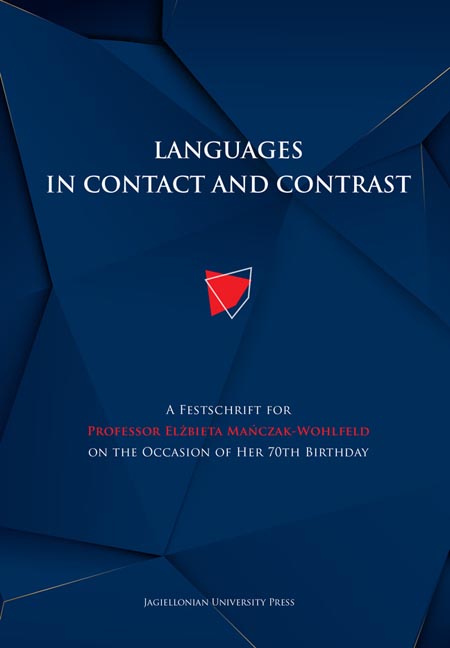 Languages in Contact and Contrast
Languages in Contact and Contrast Published online by Cambridge University Press: 14 October 2023
A multilingual gaffe
One of the most memorable linguistic experiences I have had in recent years, as well as one which has subsequently caused me to reshape my views on multilingualism, was in the company of Professor Elżbieta Mańczak-Wohlfeld. At the outset, it bears mentioning that one reason this event is so impressed upon my memory is because it was thoroughly embarrassing, and it was my own fault. My actions and behaviour should in no way implicate Elżbieta, who, as usual, handled herself with customary dignity and aplomb.
The event in question took place in the autumn of 2018. Elżbieta, along with me and two other scholars, were guests of a Danish colleague (whose chapter appears in this volume) for our work as members on the steering committee for the Global Anglicisms Database Network. It was also in the capacity of this research network, incidentally, that I came to know Elżbieta, both as a scholar and as a friend.
On the final afternoon of our weekend work session, Elżbieta and I headed out for a walk to the beach before lunchtime. We were in a bit of a hurry to get back in time for lunch, so I checked Google maps to ensure that we were in the right place. This was my first mistake: never trust Google maps over memory. Google maps showed that our colleague’s home was just on the other side of a hedgerow, but there was no way to cross the hedge to gain access to our host’s garden. I recalled that there was a gap in the hedge which our host had shown us earlier, but I could not remember exactly where the gap was. Elżbieta and I followed the hedgerow a bit farther. Could the gap be there? But no, it was not. At this stage we looked around in alarm, as we suddenly found ourselves in a neighbour’s garden, but with no obvious way to get out. Adding to our sense of alarm was the fact that, when we turned from the hedgerow, we saw a group of six nuns sitting around a table on the neighbour’s terrace, watching us intently.
To save this book to your Kindle, first ensure [email protected] is added to your Approved Personal Document E-mail List under your Personal Document Settings on the Manage Your Content and Devices page of your Amazon account. Then enter the ‘name’ part of your Kindle email address below. Find out more about saving to your Kindle.
Note you can select to save to either the @free.kindle.com or @kindle.com variations. ‘@free.kindle.com’ emails are free but can only be saved to your device when it is connected to wi-fi. ‘@kindle.com’ emails can be delivered even when you are not connected to wi-fi, but note that service fees apply.
Find out more about the Kindle Personal Document Service.
To save content items to your account, please confirm that you agree to abide by our usage policies. If this is the first time you use this feature, you will be asked to authorise Cambridge Core to connect with your account. Find out more about saving content to Dropbox.
To save content items to your account, please confirm that you agree to abide by our usage policies. If this is the first time you use this feature, you will be asked to authorise Cambridge Core to connect with your account. Find out more about saving content to Google Drive.